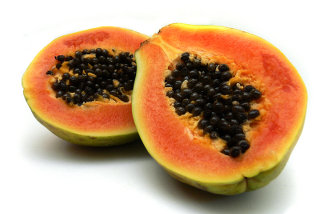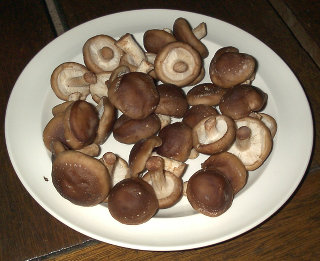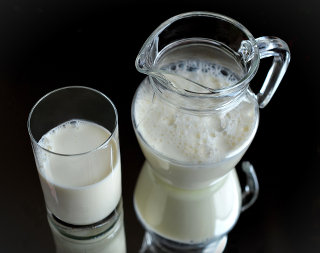- Home
- Enzyme Diet
- Enzymes in Food
Enzymes In Food: High-Enzyme Foods
Enzymes in food add to the enzymes made by our bodies. This is a nutritional benefit in addition to the vitamins, minerals, or other nutrients in the food. Some foods—all raw or cultured—have a high level of enzymes and are listed here. For the benefits of these foods, see the discussion below the list.
List of High-Enzyme Foods
This list is compiled from Edward Howell's Enzyme Nutrition, Sally Fallon's Nourishing Traditions, Anthony Cichoke's The Complete Book of Enzyme Therapy, and Steve Meyerowitz's Wheatgrass, Nature's Finest Medicine.
All foods are raw or (in the case of some fermented foods) never heated after fermentation.
Fruit
 Papaya
PapayaAvocado
Banana
Bilberries
Cantaloupe
Dates
Figs
Grapes
Guava
Kiwi
Mango
Melons
Papaya
Pineapple
Saw palmetto berries
Vegetables, Grains, and Herbs
 Ginger Root
Ginger RootAloe vera
Barley grass
Cucumbers
Garlic (raw)
Ginger root
Olive oil
Olives
Onions (raw)
Pau d'arco
Sprouted grains
Sprouts (According to Howell, sprouts contain the most enzymes when they are 1/2" long.)
Wheat germ (raw)
Wheatgrass juice
Nuts and Seeds
Coconut (but not coconut oil)
Flaxseed
Germinated tree nuts
Unrefined oils
Sea Vegetables and Algae
Chlorella
Kelp (raw)
Spirulina
Mushrooms
 Shiitake Mushrooms
Shiitake MushroomsMaitake
Reishi
Shiitake
Animal Products
 Milk
MilkBee pollen
Honey (raw)
Royal jelly
Butter (raw and unpasteurized)
Milk (raw and unpasteurized)
Cultured Foods
Cheese
Kefir
Yogurt
Other cultured dairy products
Sauerkraut (raw)
Kimchee (raw)
Pickled vegetables (raw)
Natto
Miso
Soy sauce (traditionally made)
Tempeh
Benefits of high-enzyme foods
Enzymes are special proteins that act as the life force in living beings. In both plants and animals, enzymes carry out all the activities of metabolism. Some enzymes from the plant or animal's life are retained in uncooked food. When you eat this food, the enzymes can continue their activity.
One activity is to help digest the food itself!
- The raw avocado contains the enzyme lipase that breaks down the fat (lipids) in the avocado.
- Unpasteurized milk contains lactase, the enzyme that breaks down the milk protein lactose. People with lactose intolerance actually lack the ability to produce enough lactase in their digestive system. They often can't comfortably drink pasteurized milk, but can drink unpasteurized milk that includes its own lactase.
- Raw beef contains the enzyme cathepsin. Beef that is aged is tenderized by the action of this enzyme.
Other foods contain enzymes that affect other foods.
- Raw pineapple and raw papaya contain protease enzymes that digest protein. They are often used as tenderizers and marinades.
As we age, or under toxic conditions, our body's ability to produce enzymes is compromised. Enzymes in food, or enzyme supplements, help take the pressure off our need to produce digestive enzymes. In particular, an overworked pancreas can be relieved.
As enzyme researcher Edward Howell put it, food enzymes add to our “enzyme potential.”
Consumed enzymes do indeed help our bodies in ways not thoroughly understood, but the case for their promoting health and alleviating disease has been well made.
Unheated Food
High-enzyme foods are high-calorie, special superfoods such as those listed above that are also raw or never re-heated.
The heating of food destroys its enzymes. Cooking, canning, pasteurization – all permanently deactivate any enzymes in food.
All foods that have ANY enzymes are raw. They are:
- Raw: never been heated
- Raw cultured (fermented) foods
- Foods cultured after
cooking and never re-heated. These contain enzymes from the fermentation process, not from the original food.
The foods in this list have especially high levels of enzymes.